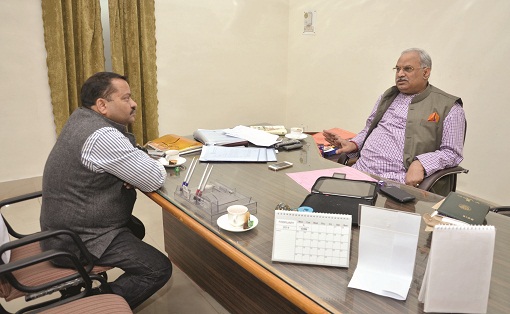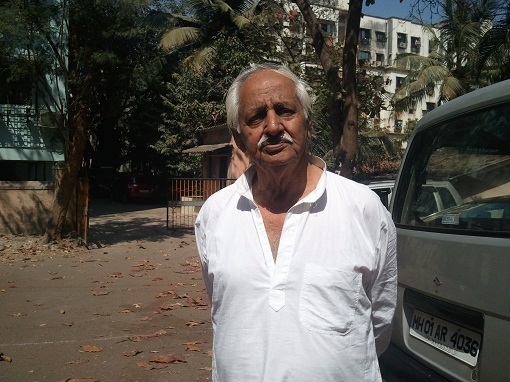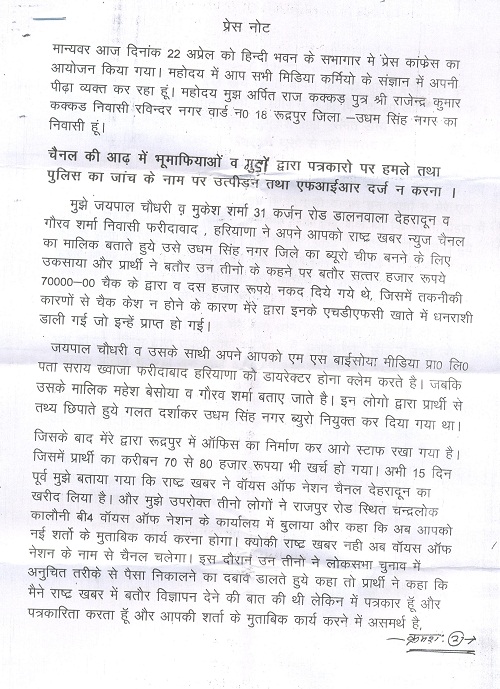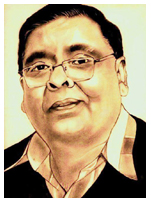By MARK BERGEN
Two years ago, Samir Patil surveyed his publishing floor in Mumbai, one of 10 he owned, and saw death. It was not for a lack of lively activity. His company, ACK Media, shipped roughly six million books, magazines and DVDs across India every month. In 2007, he had bought the children’s comic book Amar Chitra Katha, eventually merged it with two other titles and set lofty goals, described here, to revitalize the once popular comics industry.
But then logistics set in. “Just looking at the warehouses, the returns, the time it takes to get the money back—this just cannot continue,” he recalled. “The physical distribution system is a dead duck.”
In March 2012, Mr. Patil and his partner sold ACK Media to Future Ventures, the investment arm of the retailer Future Group. (Future Group is now trying to offload its shares.) And Mr. Patil moved on to a new venture—one that would ditch the dead duck altogether.
Early next year, Mr. Patil and five partners will launch Scroll.in, an online publication of Indian news, for Indian readers. It is one of a handful of new media outlets seizing what they see as a market gap: a deficit of slick, smart Web options in a nation full of print readers. As digital operations are being primed with investor cash elsewhere, Indian entrepreneurs see an opportunity to reach an increasingly connected, literate, spending population. And to crack a tricky economics quandary.
India is frequently considered the last vestige of printed news. In many ways, it is. With a growing literacy rate, primarily in rural areas, newspapers—in Hindi, regional languages and even English—continue to sell well. The latest figures from the Indian Readership Survey (IRS), a national study, show that the print media is still on an incline. The top three daily newspapers, all Hindi, each reach more than 12 million readers.
Yet the national economic downturn, coupled with a surging Internet population, has not left the Indian media immune to pain. Magazines, in particular, are suffering. Of the top 10 tracked by the IRS—only one of which, India Today, is English—just two saw a rise in readership in the last measured quarter. The lifestyle magazine publisher Outlook Group recently shut three of its international titles. In September, ABP Group, a Kolkata media house, sold Businessworld, its 22-year old magazine that failed to deliver revenues.
It is this vacuum that Mr. Patil hopes to fill. In the next eighteen months, Scroll.in plans to swell to 20 journalists, in Mumbai, New Delhi, Chennai and Bangalore. They will offer news analysis and original reporting, explained Mr. Patil. The publication’s design strategy is geared toward handheld devices and their educated, high-end owners. “Everyone who buys a 100 rupee magazine in India,” he said, citing the equivalent of $1.63, “probably has a smartphone or tablet.”
As Indians steadily turn to their phones and Facebook feeds for the news, others are diving in. Exchange4Media, the new owner of Businessworld, has voiced plans to enhance its digital arm. As some Indian newspapers are freezing hiring, VCCircle, a six-year old online publication covering Indian investments, is now expanding its 50-person newsroom. In August, a pair of advertising professionals in New Delhi launched ScoopWhoop, a Web site of lists and links—akin to Buzzfeed and Upworthy, two venture capital-backed operations–targeting Indians.
“We felt that most content that exists out there is inevitably American—something that most of us don’t quite relate to,” ScoopWhoop co-founder Sattvik Mishra wrote in an e-mail.
Each new publisher faces an old Internet dilemma, one especially steep in India: making money.
With shallow Internet penetration in the country, India’s companies have shied away from Web advertising. Data from the Internet and Mobile Association of India, or IAMAI, reveal that overall online advertising hit 22.6 billion rupees, or $369 million, in the past fiscal year, a jump of nearly 30 percent from the previous year. But compared to U.S. advertisers, who will pour in an estimated $109.7 billion this year, the figures are trivial. Indian advertisers spend a higher rate on mobile, yet the sum is relatively negligible—around half a percent of U.S. spending.
The IAMAI expects Indian Web sites’ advertising revenue to tick up, though it will be below that of print and dwarfed by that of the nation’s booming television industry.
India’s online readership is expanding briskly, from 56 million to 74 million last year, according to ComScore, a digital analytics firm. Yet even if newcomers can attract readers, they will find it impossible to fund bloggers, editors and journalists with advertising income alone. CPM, the common metric that measures the price advertisers will pay per one thousand impressions, ranges from 100 to 120 rupees in India. US rates are four to five times larger.
Mr. Patil argued, quite forcefully, that advertising rates are low because the quality of journalism is as well. “India deserves a better national newspaper than what we have,” he said.
At the moment, the largest national English-language newspaper, The Times of India, is tied to India’s biggest online operation, Times Internet, which owns sites in English, Hindi and three regional languages. Roughly 24 million people in India visit its online real estate every month. (Facebook has more than twice as many unique visitors from India.) The next most popular national digital operator, Network18, is also a media conglomerate, partially owned by Mukesh Ambani, India’s richest person. In the last fiscal year, the company listed $14.3 million in digital revenues.
Network18 owns four news and opinion sites. Yet, like Rediff.com, an Indian online pioneer, the company also runs active entertainment and shopping sites. Its annual intake from these digital commerce sites is more than three times its digital journalism revenue. Niche sites, like those listing automobile prices and reviews, also reach a growing Indian Internet audience. Cricket is huge. But pure news sites alone have yet to make considerable profits.
Regional-language newspapers are now drawing more online readers, but in general they still reach far more in print. Most of their Web visitors come from outside India, said Kedar Gavane, India director of ComScore.
Like English readers, however, regional-language news consumers are shifting media. NewsHunt is a four-year old application that partners with newspapers to convert their copy into easily readable text for phones. Acquired by the Bangalore company Verse last year, Newshunt claims to reach 31 million readers of 87 different publications, in 11 different languages. (They are working on adding Urdu.) Ninety-five percent of their billion monthly visits are to regional-language stories, said Vishal Anand, chief product officer.
But they have struggled to find buyers for the sliver of banner space on these stories. While most of India’s news is not consumed in English, most of its advertisements are. English readers spend more, and technical hurdles persist for local scripts online. “We’re trying to convince our advertisers, but no one is experimenting now,” Mr. Anand confessed.
For now, the digital publishers are pursuing English readers. Last year, VCCircle began offering a premium service—exclusive news and insights, for $100 a year. (Sahad P.V., the founder and editor, said that they have “thousands of subscribers,” without offering further details.) The site also runs a research arm, and hosts frequent paid events for the business class. ScoopWhoop’s proprietors pledged that they would keep their site free of display advertisements. Instead, they will use the fashionable but controversial tactic of sponsored content to pay bills. Scroll.in, which is funded by its owners, is pursuing investors and considering sponsored advertisements. The focus, Mr. Patil said, is to build an audience over two years. “What will happen after that,” he said, “all bets are off.”
For a long time, Naresh Fernandes approached the digitization of his trade like many journalists: He was skeptical. Then Mr. Patil came to him with his pitch. “He’s got excellent, and realistic, ideas about how we make this work as a business,” said Mr. Fernandes, a well-known Mumbai reporter who is now a founding editor of Scroll.in. “We’re in this for the long term, to explore how we can make journalism work.”
That, of course, is the stated goal for many journalists working online. Despite a bundle of barriers, India offers a few long-term assets to digital denizens. Readers still demand objectivity, Mr. Patil said. “And the idea that journalists are doing something in the public good, not as a business model, is still very much alive,” he added. “For better, or worse.”
Mark Bergen is a freelance journalist based in Bangalore.
साभार: इंटरनेशनल न्यूयार्क टाइम्स





